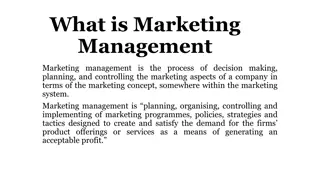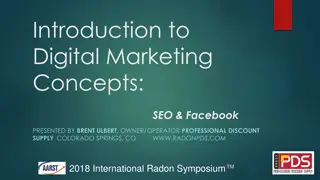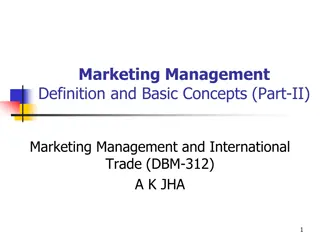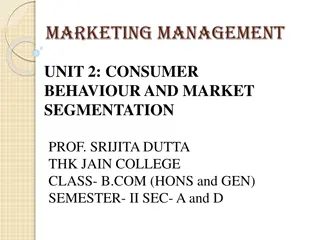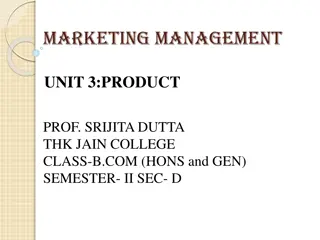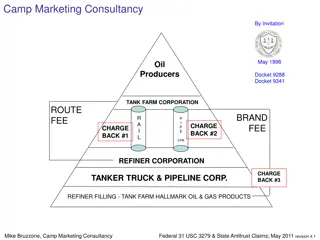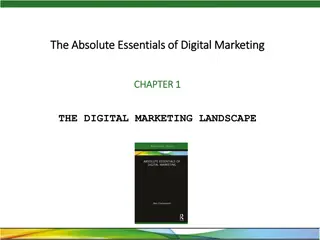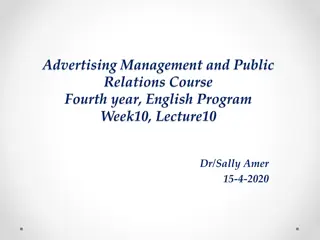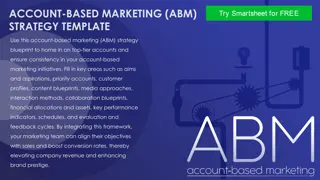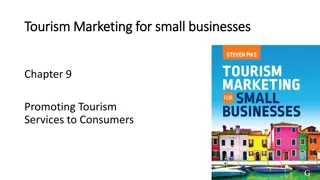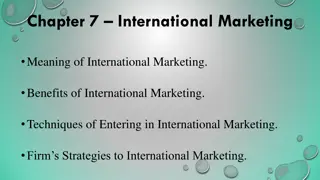Understanding Marketing: Concepts, Strategies, and Implementation
Marketing is a strategic process that involves creating value for customers, building strong relationships, and delivering customer satisfaction for business success. This includes identifying customer needs, designing effective marketing strategies, and leveraging the marketing mix to achieve business objectives.
Download Presentation

Please find below an Image/Link to download the presentation.
The content on the website is provided AS IS for your information and personal use only. It may not be sold, licensed, or shared on other websites without obtaining consent from the author. Download presentation by click this link. If you encounter any issues during the download, it is possible that the publisher has removed the file from their server.
E N D
Presentation Transcript
Definition The process by which companies create value for customers and build strong customer relationships in order to capture value from customers in return. Kotler and Armstrong (2010). Marketing is the management process for identifying, anticipating and satisfying customer requirements profitably. The Chartered Institute of Marketing (CIM).
The twofold goal Attract new customers by promising superior value Keep and grow current customers by delivering satisfaction All ways low prices
The Marketing Process Create value for customers and build customer relationship Capture values from customers in return Construct an integrated marketing programme that delivers superior value Capture value from customers to create profits and customer quality Understand the market place & customer needs and wants Build profitable relationships and create customer delight Design a customer- driven marketing strategy
Marketing Concept Marketing is not only much broader than selling, it is not a specialized activity at all. It encompasses the entire business. It is the whole business seen from the point of view of the final result, that is, from the customer's point of view. Concern and responsibility for marketing must therefore permeate all areas of the enterprise. Drucker (1955, 2007).
Production orientation- focus was on the science of manufacturing Product orientation- focus on the quality and desirability of a certain product Sales orientation- products sold based upon features rather than the benefits to the individual customer and his or her needs Market orientation- needs and wants are satisfied through the delivery of value to satisfied customers
Marketing Mix for Burger King Product As a fast food hamburger restaurant chain, BK produces, hamburgers, cheeseburgers as well as Fries, Salads, Hash browns, Coffee, Juice, Shakes, cookies and pies. Offering a retail line of microwaveable Burger King Brand French fries at select retailers in the United States Starbucks Corp.'s Seattle's Best Coffee to all its U.S. restaurants
Price The Price that is charges for the products on offer $1 double cheese burger Slushy drinks for $1 The Premium Burger at a higher price Place Burger King operates its business via franchises, under a franchise arrangement, the franchisees invest in the equipment, signage, and decor, while the company owns/leases the land and building
Promotion Driving sales through Facebook The BK Crown Card BK eGift card ATL campaigns YouTube Videos Get a tasty new look Gift Card Facebook Campaign
The Digital Age The rise of the Internet New communication and advertising tools (Cellphones, ipods, interactive TV, etc..) Bricks-and-mortar to click-and mortar The pace/speed of innovation Better segmentation More focused communications
Rapid Globalization Global competition International supply chain Irrelevance of country of origin concept E.g: Coke offers more than 400 Brands in 200 countries Product range
Ethics & Social responsibility Marketers to take greater responsibility for social & environmental impact Increase in consumer out cries and legal issues Companies may react to this in different ways Some take a pro-active approach E.g: Patagonia- Pledging 1% of sales or 10% of profits, which ever is higher, to the protection of the natural environment
Growth of Not-for-profit marketing This includes colleges, hospitals, museums, zoos, etc Colleges compete for students and funds NFP s- YMCA, The Salvation Army, etc.. Compete for membership Government agencies- branches of the US military, US postal service




